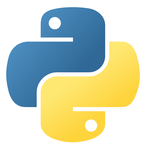Understanding Python's Error Handling: A Deep Dive
October 28, 2024, 4:59 pm
Python is a language that embraces simplicity. Yet, when it comes to error handling, many developers stumble. They know the basics but often miss the nuances. This article aims to peel back the layers of Python's error handling, revealing the intricacies that can elevate your coding from mediocre to masterful.
Error handling in Python revolves around two main philosophies: Look Before You Leap (LBYL) and Easier to Ask Forgiveness than Permission (EAFP). These two approaches are like two sides of a coin, each with its strengths and weaknesses.
**Look Before You Leap (LBYL)**
Imagine standing at the edge of a cliff. Before you leap, you check the ground below. This is LBYL. It emphasizes caution. Before executing a potentially risky operation, you check if it’s safe. For instance, when deleting a file, you might check if it exists:
```python
if os.path.exists(file_path):
os.remove(file_path)
else:
print(f"Error: file {file_path} does not exist!")
```
At first glance, this seems robust. However, the reality is more complex. The file might exist, but other issues could arise. Permissions, file locks, or even the file being a directory can cause the operation to fail. LBYL can lead to a tangled web of checks, making the code cumbersome and error-prone.
Moreover, race conditions lurk in the shadows. By the time you check a condition and perform an action, the state may have changed. The file could disappear, or its permissions could change. This unpredictability makes LBYL less reliable in dynamic environments.
**Easier to Ask Forgiveness than Permission (EAFP)**
Now, picture a different scenario. You leap off the cliff, trusting that a safety net will catch you. This is EAFP. Instead of checking conditions beforehand, you attempt the operation and handle any exceptions that arise. This is the preferred method in Python.
```python
try:
os.remove(file_path)
except OSError as error:
print(f"Error deleting file: {error}")
```
EAFP shifts the responsibility of error checking to the function being called. This approach simplifies your code. You focus on the task at hand, allowing the function to manage its own errors. If something goes wrong, you catch the exception and handle it gracefully.
However, this method isn’t without its pitfalls. If you catch all exceptions indiscriminately, you risk masking bugs. Unexpected exceptions can slip through the cracks, leading to silent failures. The key is to catch specific exceptions rather than using a broad net.
**Classifying Errors**
Understanding the nature of errors is crucial. Errors can be classified into two categories: new errors and bubbled-up errors. New errors are those your code generates, while bubbled-up errors are those passed from called functions.
Consider a function that attempts to read from a database. If it encounters an issue, it raises an exception. If your code doesn’t handle it, the error bubbles up the call stack. This is where understanding the context of errors becomes vital.
Errors can also be categorized based on recoverability. Some errors are recoverable, meaning your code can handle them and continue executing. Others are not, requiring immediate termination of the current operation.
For example, if a song lacks a title, you might raise a `ValueError`:
```python
if song.name is None:
raise ValueError('The song must have a name')
```
This informs the calling function that it cannot proceed. Conversely, if a file doesn’t exist, you might choose to ignore the error and continue.
**Handling Errors in Practice**
Let’s break down how to handle errors effectively.
1. **New Recoverable Errors**: If your code detects an issue it can fix, do so and continue. For instance, if a song lacks a year, assign a default value.
2. **Bubbled-Up Recoverable Errors**: Use EAFP to catch exceptions from called functions. If an artist isn’t found in the database, add them and proceed.
3. **New Unrecoverable Errors**: If your code encounters a critical issue, raise an exception. This informs the calling function that it cannot continue.
4. **Bubbled-Up Unrecoverable Errors**: Sometimes, the best action is to do nothing. If a function encounters an error it cannot handle, let it bubble up. This allows higher-level functions to decide how to proceed.
**Conclusion**
Error handling in Python is more than just try-except blocks. It’s about understanding the nature of errors, the context in which they arise, and how to handle them effectively. By mastering LBYL and EAFP, and by classifying errors based on their recoverability, you can write cleaner, more robust code.
As you dive deeper into Python, remember: every error is an opportunity to learn. Embrace them, and let them guide you to become a better developer. The world of Python is vast, and with each error you encounter, you gain a new tool for your coding toolbox. So leap boldly, and when you fall, know how to catch yourself.
Error handling in Python revolves around two main philosophies: Look Before You Leap (LBYL) and Easier to Ask Forgiveness than Permission (EAFP). These two approaches are like two sides of a coin, each with its strengths and weaknesses.
**Look Before You Leap (LBYL)**
Imagine standing at the edge of a cliff. Before you leap, you check the ground below. This is LBYL. It emphasizes caution. Before executing a potentially risky operation, you check if it’s safe. For instance, when deleting a file, you might check if it exists:
```python
if os.path.exists(file_path):
os.remove(file_path)
else:
print(f"Error: file {file_path} does not exist!")
```
At first glance, this seems robust. However, the reality is more complex. The file might exist, but other issues could arise. Permissions, file locks, or even the file being a directory can cause the operation to fail. LBYL can lead to a tangled web of checks, making the code cumbersome and error-prone.
Moreover, race conditions lurk in the shadows. By the time you check a condition and perform an action, the state may have changed. The file could disappear, or its permissions could change. This unpredictability makes LBYL less reliable in dynamic environments.
**Easier to Ask Forgiveness than Permission (EAFP)**
Now, picture a different scenario. You leap off the cliff, trusting that a safety net will catch you. This is EAFP. Instead of checking conditions beforehand, you attempt the operation and handle any exceptions that arise. This is the preferred method in Python.
```python
try:
os.remove(file_path)
except OSError as error:
print(f"Error deleting file: {error}")
```
EAFP shifts the responsibility of error checking to the function being called. This approach simplifies your code. You focus on the task at hand, allowing the function to manage its own errors. If something goes wrong, you catch the exception and handle it gracefully.
However, this method isn’t without its pitfalls. If you catch all exceptions indiscriminately, you risk masking bugs. Unexpected exceptions can slip through the cracks, leading to silent failures. The key is to catch specific exceptions rather than using a broad net.
**Classifying Errors**
Understanding the nature of errors is crucial. Errors can be classified into two categories: new errors and bubbled-up errors. New errors are those your code generates, while bubbled-up errors are those passed from called functions.
Consider a function that attempts to read from a database. If it encounters an issue, it raises an exception. If your code doesn’t handle it, the error bubbles up the call stack. This is where understanding the context of errors becomes vital.
Errors can also be categorized based on recoverability. Some errors are recoverable, meaning your code can handle them and continue executing. Others are not, requiring immediate termination of the current operation.
For example, if a song lacks a title, you might raise a `ValueError`:
```python
if song.name is None:
raise ValueError('The song must have a name')
```
This informs the calling function that it cannot proceed. Conversely, if a file doesn’t exist, you might choose to ignore the error and continue.
**Handling Errors in Practice**
Let’s break down how to handle errors effectively.
1. **New Recoverable Errors**: If your code detects an issue it can fix, do so and continue. For instance, if a song lacks a year, assign a default value.
2. **Bubbled-Up Recoverable Errors**: Use EAFP to catch exceptions from called functions. If an artist isn’t found in the database, add them and proceed.
3. **New Unrecoverable Errors**: If your code encounters a critical issue, raise an exception. This informs the calling function that it cannot continue.
4. **Bubbled-Up Unrecoverable Errors**: Sometimes, the best action is to do nothing. If a function encounters an error it cannot handle, let it bubble up. This allows higher-level functions to decide how to proceed.
**Conclusion**
Error handling in Python is more than just try-except blocks. It’s about understanding the nature of errors, the context in which they arise, and how to handle them effectively. By mastering LBYL and EAFP, and by classifying errors based on their recoverability, you can write cleaner, more robust code.
As you dive deeper into Python, remember: every error is an opportunity to learn. Embrace them, and let them guide you to become a better developer. The world of Python is vast, and with each error you encounter, you gain a new tool for your coding toolbox. So leap boldly, and when you fall, know how to catch yourself.

